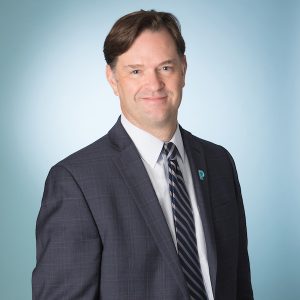Parkinson’s Foundation Adds 3 Centers of Excellence to Its Network

Main campus of Ohio's Cleveland Clinic, which on Oct. 2 will become a Parkinson's Foundation "Center of Excellence." (Photo courtesy of Cleveland Clinic)
Ohio’s Cleveland Clinic will officially become a Parkinson’s Foundation Center of Excellence on Oct. 2, followed by the Medical University of South Carolina in Charleston on Oct. 4, and the Cleveland Clinic Nevada in Las Vegas on Oct. 19.
Next month’s three plaque unveiling ceremonies will bring the number of U.S. and overseas facilities bearing the designation to 45, said John Lehr, CEO of the Parkinson’s Foundation.
“The centers are already functional, and up and running,” Lehr told Parkinson’s News Today in a Sept. 26 phone interview. “What this designation means is that they have achieved a certain level of excellence as defined by the foundation. There’s a series of criteria we look at. All these facilities competed with 28 other potential centers, and after a careful yearlong review, we determined that these three were the best qualified to become centers of excellence.”
In other words, Lehr said, these three centers — along with the other 42 that have already received the designation — are “fully credentialed in terms of having movement disorder specialists and neurologists trained in Parkinson’s-specific issues.”
Such centers are staffed with teams of professionals in physical therapy, occupational therapy, social work, and mental health.
“They’re already providing patients with the full range of ancillary services and also conducting research,” said Lehr, estimating they serve a combined 120,000 Parkinson’s patients annually.
Among patient advocacy groups, the Centers of Excellence concept originated with the Cystic Fibrosis Foundation (CFF), where Lehr worked from 2004-2009 on the business side. Among other things at CFF, he ran a national campaign that raised $175 million — money that paid for the early-phase trials of the Vertex therapies that ultimately became Kalydeco (ivacaftor) and Orkambi (ivacaftor/lumacaftor).
“This is the same concept,” Lehr said. “In each disease-specific area where you have these types of centers, it’s a signal to patients with that disease — and their caregivers — that they can be assured they’re getting the highest level of care.”
The expansion of the Centers of Excellence project, first announced earlier this month, is funded through donations from individuals. The largest single gift — in the amount of $450,000 — comes from philanthropist Stephen Bittel, founder and CEO of the South Florida real-estate developer Terranova.
Join the Parkinson’s forums: an online community for people with Parkinson’s Disease and their caregivers.
Last year, the nonprofit foundation — which has offices in New York and Miami — raised about $32 million in donations and channeled that money into three main areas: improving outcomes through better clinical care; funding basic clinical and epidemiological research to understand the causes and consequences of Parkinson’s; and investing in educational resources for people with and affected by Parkinson’s.
Of the foundation’s 45 currently designated Centers of Excellence, 31 are in the United States. The remaining 14 are scattered throughout the world, including Australia, Canada, Germany, Great Britain, Israel, the Netherlands, Singapore and Taiwan.
A study funded by the Parkinson’s Foundation and published in July predicted that 930,000 Americans would be living with the disease by 2020, rising to more than 1.2 million by 2030. According to the “Parkinson’s Prevalence Project” report — published in the journal Nature — the estimated overall prevalence of the disease among those 45 and older is 572 per 100,000.
Lehr said the rising incidence of Parkinson’s highlights the importance of that 10-year study, which collects natural history and patient data from some 12,000 individuals enrolled in the trial.
“The key for us is that, as a society, we need to be better equipped to help people with these diseases,” he said. “Someone with Parkinson’s can live 5, 10, 15 or even 20 years after diagnosis. There’s a lot of life to live, and we want to make sure that people with Parkinson’s continue to live well.”







